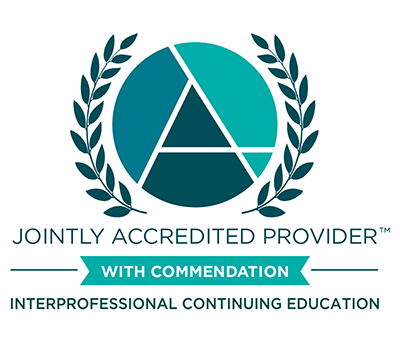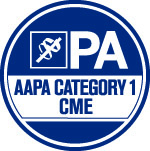WMJ Vol 122 Issue 1: Naloxone Prescribing in an Academic Emergency Department: Provider Practices and Attitudes
ABSTRACT
Introduction: Naloxone reverses opioid overdose, but it is not universally prescribed. With increases in opioid-related emergency department visits, emergency medicine providers are in a unique position to identify and treat opioid-related injury, but little is known about their attitudes and practices around naloxone prescribing. We hypothesized that emergency medicine providers would identify multifactorial barriers to naloxone prescribing and report varying levels of naloxone-prescribing behaviors.
Methods: A survey designed to assess attitudes and behaviors regarding naloxone prescribing practices was emailed to all prescribing providers at an urban academic emergency department. Descriptive and summary statistics were performed.
Results: The response rate was 29% (36/124). Nearly all respondents (94%) expressed openness to prescribing naloxone from the emergency department, but only 58% had actually done so. Most (92%) believed that patients would benefit from greater access to naloxone, however 31% also believed that opioid use would increase as access to naloxone increases. Time was the most frequently identified barrier (39%) to prescribing, followed by a perceived inability to properly educate patients on naloxone use (25%).
Conclusions: In this study of emergency medicine providers, the majority of respondents were amendable to prescribing naloxone, yet almost half had not done so and some believed that doing so would increase opioid use. Barriers included time constraints and perceived self-reported knowledge deficits regarding naloxone education. More information is needed to gauge the impact of individual barriers to prescribing naloxone, but these findings may provide information that can be incorporated in provider education and potential clinical pathways designed to increase naloxone prescribing.
Intended Audience
The target audience for this journal-based activity is healthcare providers caring for the people and communities of Wisconsin and beyond.
Learning Objectives
As a result of this journal-based activity, learners, as members of the healthcare team, will be able to:
- Describe the current state of prescribing naloxone as an antidote for opioid poisoning that can reverse opioid overdose.
- Elaborate on the barriers to naloxone prescribing and naloxone-prescribing behaviors examined in a survey study of emergency medicine providers.
- Discuss how the study findings and conclusion apply to the team-based practice in the learner’s healthcare setting.
FACULTY DISCLOSURE
It is the policy of the University of Wisconsin–Madison Interprofessional Continuing Education Partnership (ICEP) to identify, mitigate and disclose all relevant financial relationships with ineligible companies* held by the speakers/presenters, authors, planners, and other persons who may influence content of this accredited continuing education (CE). In addition, speakers, presenters and authors must disclose any planned discussion of unlabeled/unapproved uses of drugs or devices during their presentation.
For this accredited continuing education activity all relevant financial relationships have been mitigated and detailed disclosures are listed below.
| Name of Individual | Individual's Role in Activity | Financial Relationship Disclosure | Discussion of |
| Jennifer Hernandez-Meier, PhD, MSW | Author | No relevant relationships with ineligible companies to disclose | No |
| Darren Li, BS | Author | No relevant relationships with ineligible companies to disclose | No |
| Amy Zosel, MD, MS | Author | No relevant relationships with ineligible companies to disclose | No |
| Jillian Landeck, MD | Reviewer | No relevant relationships with ineligible companies to disclose | No |
| Elizabeth Salisbury-Afshar, MD, MPH | Reviewer | No relevant relationships with ineligible companies to disclose | No |
| Fahad Aziz, MD | Editor | No relevant relationships with ineligible companies to disclose | No |
| Roberta Pawlak, PhD, RN, NEA-BC | Reviewer | No relevant relationships with ineligible companies to disclose | No |
| Laura Ozkan, PA | Reviewer | No relevant relationships with ineligible companies to disclose | No |
| Shezad Baloch | Accreditation Specialist | No relevant relationships with ineligible companies to disclose | No |
*Ineligible companies are those whose primary business is producing, marketing, selling, re-selling, or distributing healthcare products used by or on, patients.
The ACCME does not consider providers of clinical services directly to patients to be ineligible companies.
Accreditation
Accreditation Statement
 | In support of improving patient care, this activity has been planned and implemented by the University of Wisconsin–Madison ICEP and the Wisconsin Medical Journal. The University of Wisconsin–Madison ICEP is jointly accredited by the Accreditation Council for Continuing Medical Education (ACCME), the Accreditation Council for Pharmacy Education (ACPE), and the American Nurses Credentialing Center (ANCC), to provide continuing education for the healthcare team. |
Credit Designation Statements
American Medical Association (AMA)
The University of Wisconsin–Madison ICEP designates this journal-based CE activity for a maximum of 1.0 AMA PRA Category 1 Credit™. Physicians should claim only the credit commensurate with the extent of their participation in the activity.
American Nurses Credentialing Center (ANCC)
The University of Wisconsin–Madison ICEP designates this journal-based CE activity for a maximum of 1.0 ANCC contact hours .
 | The University of Wisconsin–Madison ICEP has been authorized by the American Academy of PAs (AAPA) to award AAPA Category 1 CME credit for activities planned in accordance with AAPA CME Criteria. This activity is designated for 1 AAPA Category 1 CME credits. Approval is valid until 02/07/2025. PAs should only claim credit commensurate with the extent of their participation. |
Continuing Education Units
The University of Wisconsin–Madison ICEP, as a member of the University Professional & Continuing Education Association (UPCEA), authorizes this program for 0.1 continuing education units (CEUs) or 1 hour.
Available Credit
- 1.00 AAPA Category 1 CME
- 1.00 AMA PRA Category 1 Credit™
- 1.00 ANCC Contact Hours
- 1.00 University of Wisconsin–Madison Continuing Education Hours
- 1.00 Approved for AMA PRA Category 1 Credit™
Registration for this activity can only be completed through the ICEP Learning Portal. Attendee registrations made through any other sites cannot be honored. UW-Madison ICEP is not able to refund fees paid through unaffiliated registration sites, such as eMedEvents.com, MedConfWorld.com, EventEgg.com, and 10times.com. Please report any unauthorized websites or solicitations for registrations to [email protected].
Accessibility
The University of Wisconsin provides equal opportunities in employment and programming, including Title IX requirements. The University of Wisconsin fully complies with the legal requirements of the ADA and the rules and regulations thereof. If any participant in this educational activity is in need of accommodations, please notify us at [email protected]
Required Hardware/software
Free, current version of Chrome, Firefox, Safari, or Edge. Some older browsers and Microsoft Internet Explorer could produce error messages or not display the content correctly.
Free, current version of Adobe Acrobat Reader or other .pdf reader.

 Facebook
Facebook X
X LinkedIn
LinkedIn Forward
Forward